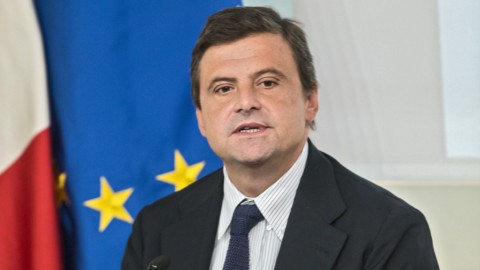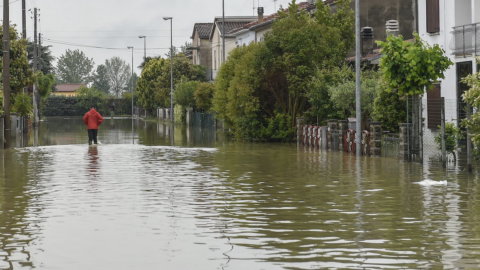Industry 4.0, the national plan launched by the Government on 22 September 2016 with the aim of increasing the technological innovation of the Italian production system leading it towards the fourth industrial revolution, blows out the first candle and changes its name. Enterprise 4.0 begins today, a denomination that intends to indicate the very beginning of a new phase.
As explained by the Minister of Economic Development, Carlo Calenda, opening the presentation on the results of the first year of implementation of the plan and on the guidelines for 2018 held in the Chamber of Deputies which was also attended by the Minister of Economy, Pier Carlo Padoan, that of Education, Valeria Fedeli, and the owner of Labour, Giuliano Poletti, with Enterprise 4.0 the range of action expands, passing from manufacturing in the strict sense to services and starting "a second chapter characterized by a wider perimeter where skills and work will be the protagonists". Not only that, as the number one of the Mef specified, the new name also indicates a more marked attention to the Italian productive fabric and to the micro-economy.
But before thinking about the future, it is necessary to take a look at the near past, namely atThe first year of application of Industry 4.0, a plan which – as underlined in the note released at the end of the conference – “has proven to be effective in supporting companies that invest in innovation and technological advancement”
Industry 4.0: the results of 2017
The results of the first phase of the Industry 4.0 plan that has just ended were illustrated by Minister Calenda. “From January to June lThe trend in orders (for innovative machinery, ed.) is growing by around 9% in line with the objective which was very challenging”. A percentage that testifies to how "the incentives are working", underlines the owner of the Mise. As regards the internal market for capital goods, the "machinery and other appliances" sector recorded an increase of 11,6%, that of "electrical and electronic equipment an increase of 10,7%, while the other categories recorded an increase of 6,1%.
There was also a "very strong reduction in stocks", a sign that production is going up, and in the first eight months of 2017 "the order expectations are at the highest level since 2010”. “The sensation of entrepreneurs – explained the Minister – is that they will order more, the perception is that orders will increase and this is very important for assessing whether next year these measures should be taken in such a way as to accommodate this cycle, or shouldn't be kept , risking, however, that this thing drops significantly”.
Talking about the spending on research and development, in the first half of 2017, as the slides shown during the presentation underline, positive data arrives both on the number of companies that will increase spending in this sector, and on the percentage of growth in spending (from a sample survey +10%/+15% )
Investments in early stage on the other hand, in the first six months of the current year they showed limited growth (+2%), lower than expected.
As of September 2017, XNUMX i development contracts a total of 102 are financed, of which 88 in the South and 14 in the Centre-North. Calenda underlined the importance of giving “priority to the South, which uses incentives much less despite the fact that the crisis has been more violent there. In the South, the industrial base must be rebuilt through investments of a negotiating nature that also involve large international players".
The planned investments amount to 3,6 billion euros, among which the food sector (21%), automotive (17%) and mechanics (15%) stand out. The subsidies granted amount to 1,9 billion (1,7 in the South and 200 million in the Centre-North) and more than 52 jobs have been created/protected.
One of the cornerstones of the industry 4.0 plan is undoubtedly the ultra broadband. In total, public interventions amounting to 3,5 billion euros have been allocated for infrastructure and incentives for the demand of households and businesses. The aim is to achieve the coverage targets set for 2020. "The tenders (for the laying of fiber in white areas, ed) have been launched, but it is one thing to assign it and one thing is to deliver on time, there is a very significant beacon of attention”, specified Minister Calenda referring to the two tenders assigned to Open Fiber.
Referring to Guarantee fund, in the first 8 months of 2017 there was a 10,7% increase in the guaranteed amount “We put 900 million in the fund and it's working. Funding is in fact growing tremendously”, highlights Calenda.
A mole not to be underestimated, however, concerns the delays in the construction of the Competence Center, whose tender should be open by the end of 2017.
Enterprise 4.0: tax credit for training 4.0
As specified during the presentation, "Enterprise 4.0 will become Work 4.0, Competence 4.0". One of the cornerstones of phase two will be the tax credit for training 4.0 which with the 2018 Budget Law will be available to companies that will make an incremental expenditure on training. The tax credit, the minister clarified, will apply “only to expenses relating to the costs of personnel who have taken training courses with a focus on at least one Industry 4.0 technology and agreed through union agreements on the following topics: sales and marketing; informatics; production techniques and technologies.
As regards the other measures, according to what is stated in the document released by the Ministry of Economic Development "in light of the results found on the main manufacturing indicators, in 2018 the main measures envisaged in the first year will be refinanced, reviewing the rates and perimeters of the incentives, compatibly with the public finance resources available”.
Padoan: "We will deliver a better country to the next legislature"
"There are no slides on public finance, but if there were, we would see difficult public finance, which however improves" explained the owner of the MEF, speaking both of "a constantly improving debt", and of the "ceasing to rise in debt, while in all other countries it continues to rise”.
As regards the public debt, Padoan underlined: "We have the label of high-debt country, however it has stopped rising and we hope to see a trend reversal soon which would be a very important signal", he added.
Another positive fact to consider is that relating to the GDP, also uphill: ”We are only at the beginning of a process that must lead us to a level even better than where we were. We have surpassed the levels of the crisis, but we are still far from the pre-crisis world”.
“Perhaps where there is a relatively more intense improvement – continued Padoan – it is on the employment side and this is an indirect indicator that there is a structural improvement”. Finally, the minister reiterated that the last two governments will deliver "a country in certainly better conditions to the next legislature".





